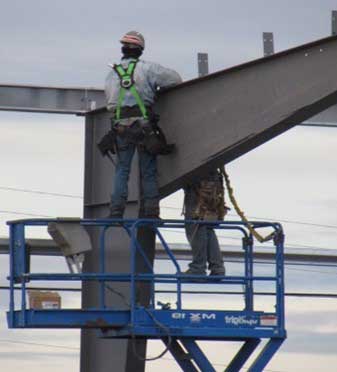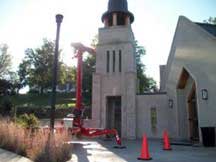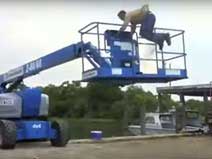Aerial Work Platform Toolbox Talk
Aerial Work Platforms (AWP)
Aerial Work Platforms (AWP), when used correctly, provide quick and safe access to work areas that at one time could only be reached from scaffolding and ladders. However, many workers are injured or killed by AWPs every year. The major causes of injuries and fatalities involving aerial lifts are falls, electrocutions, and collapses or tip-overs.
Training:
First and foremost, only authorized and competently trained personnel should operate AWPs.
Operators must receive training, and evaluation and be authorized (via a Cornell certification card) to operate an Aerial Work Platform when first assigned and every three years or as defined in Section 6.0 Training within the Aerial Work Platform Program.
This certification card is obtained by completing a two-part AWP Training course; Part 1: Classroom and Part 2: Proficiency Evaluation. Keep in mind that AWP Operators are required to demonstrate proficiency in all AWP equipment they intend to operate.
Basic safety rules:
- A Pre-Operational Inspection shall be performed on each Aerial Work Platform for each shift it is operated utilizing the appropriate Pre-Operational Inspection form
- Ensure to inspect the work area before paying particular attention to slops, voids, overhead obstructions, electrical power lines, and weather conditions.
- Use proper fall protection. In addition to an AWP’s guardrail system, some types of AWPs require that personal fall protection be worn and properly attached to the designated anchor point. Refer to section 5.2.9 of the Written Program for specifics based on the equipment type.
- Keep your entire body inside the basket. Maintain firm footing on the floor of the AWP platform. Using planks, ladders, climbing the boom, top rail, mid-rail, or other devices to gain height are prohibited
- The boom swing path and area shall be clear of obstructions and personnel before swinging, extending, retracting, raising, and lowering the boom.
- Don’t overload the lift. Before use, the capacity of the lift should be checked by locating the capacity ratings on the basket.
- Always follow the manufacturer’s restrictions and recommendations. This is especially important regarding wind speeds.
- Everyone on the ground must be clear of the lift when raised, lowered, or in working positions. In certain circumstances when near structures or other possible pinch points the area may need to be barricaded with danger tape or similar.




